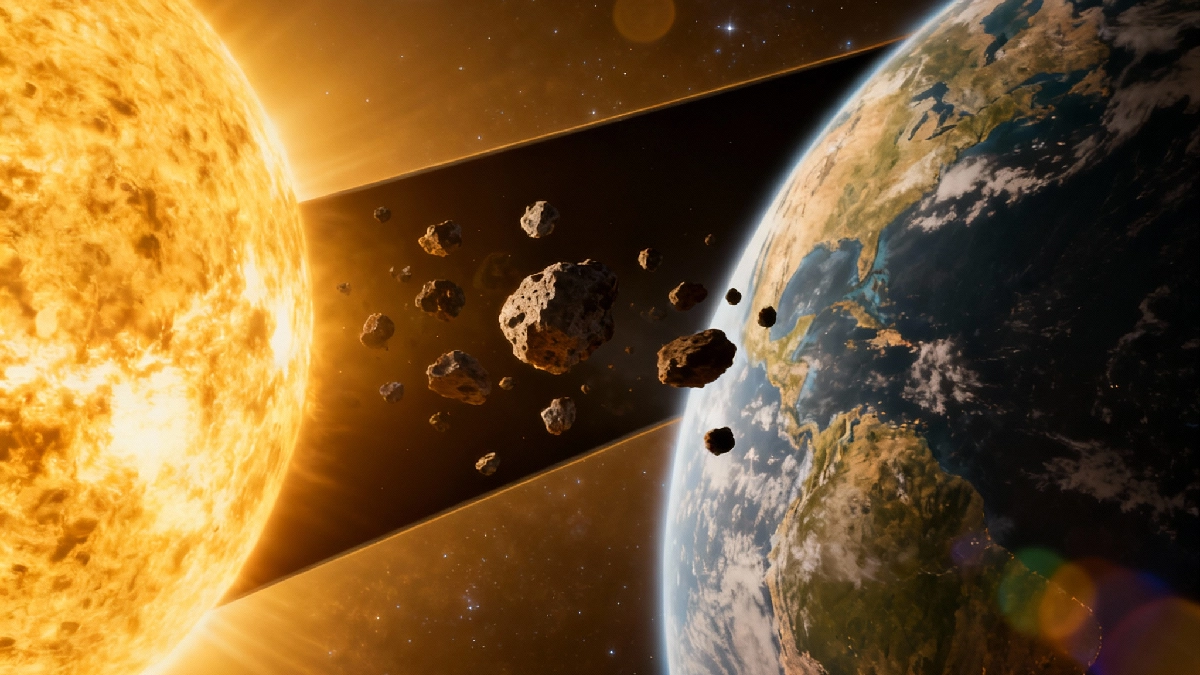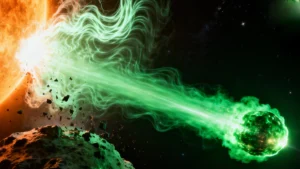The idea that a blind spot near Venus could conceal city-killing asteroids sounds sensational—until the geometry is mapped and the detection gaps are audited across telescopes, orbits, and mission timelines. The danger isn’t that Earth is about to be hit tomorrow; it’s that the current surveillance architecture leaves a wedge of sky where large, fast, low-warning objects can hide until weeks before a possible encounter. This is a systems problem: sunlight, orbits, survey cadence, and funding cycles conspire to create an “invisible corridor” where high-consequence objects can slip through. The fix is also systemic: coordinated space-based sensors, smarter scheduling, dedicated Venus-adjacent assets, and policy that treats low-probability, high-impact risks with the same seriousness as hurricanes and earthquakes.
What the blind spot is
From Earth, anything near the Sun’s glare becomes effectively unobservable for large parts of the year because optical surveys avoid the low-elongation sky to protect instruments and reduce false detections. Venus orbits closer to the Sun than Earth, so asteroids sharing Venus-like orbits spend much of their sky-time close to the Sun’s apparent position, where ground telescopes have almost no visibility. In practice, this creates a persistent “twilight wedge” where even 140–400 meter objects—large enough to devastate a metro area—can remain undetected until they approach from the daylit side. The result is not an imminent doomsday but a shortened warning horizon that can collapse from years to weeks.
The hidden population
Astronomers categorize these into co-orbitals and near-Venus crossers: Trojans leading or trailing Venus, quasi-satellites that loiter near resonance, and low-eccentricity objects whose brightness and phase angle keep them faint in Earth’s skies. Modeling and limited detections suggest the known sample is just the tip of a larger distribution, with sizes spanning roughly 140–400 meters for many candidates. At those diameters, impact energies reach into multi-megaton to hundreds of megatons of TNT equivalent—sufficient to flatten an urban core, ignite fires, and generate regional shock and overpressure damage. The true risk driver isn’t frequency; it’s consequence multiplied by reduced detection time.
Why current surveys miss them
- Ground-based surveys avoid small solar elongations, and even “twilight surveys” have narrow time windows, poor seeing, and high false-positive rates.
- Phase-angle effects make near-Sun objects much fainter, so they fall below survey limiting magnitudes until they are closer—and thus later in approach.
- Survey cadence and follow-up suffer from weather, lunar phase, and the need to prioritize sky away from the Sun where most near-Earth objects are found.
- Radar coverage is reactive: it requires prior optical discovery and ephemerides; it cannot “sweep” the blind wedge proactively.
Net effect: the architecture is optimized for main-belt deliveries on Earth-like approach geometries, not for near-Sun, Venus-like orbital families.
The second-order effects
- Policy: Warning times of 2–4 weeks for a 150–300 m object are insufficient for evacuation of megacities, relocation of critical infrastructure, or international coordination on impact predictions.
- Insurance and finance: Risk models for urban catastrophe seldom price in asteroid impact externalities due to sparse detection data in the blind region.
- Mission readiness: Kinetic impactors or gravity tractors require years of lead time; without early detection, only civil defense (shelter/evacuation) remains.
- Scientific bias: The catalog skews toward objects that are easy to see, undercounting near-Sun populations and biasing hazard statistics.
The fix: build a complementary system
A resilient solution layers detectors with different geometries, wavelengths, and orbits to erase the blind spot rather than just shrink it.
- Space-based infrared surveyors: IR platforms detect the warm glow of asteroids independent of phase angle, excelling at near-Sun elongations. A Venus-trailing or Venus-leading orbit would see the blind wedge directly and continuously.
- Venus-adjacent sentinels: Smallsats in resonant solar orbits near Venus’s path could stare permanently into the glare region with sunshades and thermal control, returning wide-field, high-cadence detections.
- L1/L2 platforms with internal coronagraphs: Solar-terminator pointing plus coronagraphy can suppress solar glare and extend usable elongation angles from Earth-Sun libration points.
- Coordinated twilight campaigns: Upgraded ground surveys with specialized filters, fast-readout sensors, and AI vetting can exploit brief dawn/dusk windows more effectively while space assets mature.
- Rapid astrometry and radar handshake: Once a candidate is flagged, an automated tasking network should secure orbit solutions within hours using global telescopes and, when geometry permits, planetary radar.
- Data fusion and open ephemerides: A public, low-latency pipeline combining photometry, thermal IR, and radar improves orbit determination and avoids duplication, accelerating from discovery to characterization.
What “weeks of warning” really means
Two to four weeks of lead time for a 200–300 m object arriving from the day side would allow for impact-corridor narrowing, civil defense activation, and targeted evacuations but not any meaningful deflection mission. Practical steps include pre-planned sheltering protocols, relocation of critical equipment, power and hospital surge, and rehearsed cross-border coordination for landfall regions. This shifts preparedness from deflection-centric to consequence mitigation for the subset of threats that emerge from the Venus blind wedge.
Why this matters now
Even if the annual probability remains low, the expected loss over decades is governed by fat-tailed impacts whose damage scales superlinearly with size. Investments in a Venus-facing IR sentinel and complementary twilight campaigns are modest compared to the avoided loss from a single metropolitan strike. Moreover, the same architecture improves discovery of near-Sun comets, characterizes dust and zodiacal light, and advances planetary science—broadening scientific return.
A pragmatic roadmap
- Near-term: Expand coordinated twilight surveys; fund rapid follow-up networks; exercise civil defense playbooks with realistic “day-side approach” scenarios.
- Mid-term: Launch a dedicated IR space telescope with optics and cooling optimized for small elongations; integrate with an autonomous onboard moving-object pipeline.
- Long-term: Position one or more smallsats in Venus-like heliocentric orbits for continuous coverage; develop standby characterization kits (spectroscopy, light curves) and ensure planetary radar upgrades for fast tracking.
The takeaway
The “blind spot near Venus” is not a sensational headline but a solvable systems gap. City-killing asteroids exploit geometry and sensor bias, not ignorance. By designing a layered, Venus-facing detection architecture and rehearsing day-side approach contingencies, civilization trades surprise for foresight—and weeks for years. The choice is less about fear and more about engineering priorities: build where the darkness is deepest.
Last Updated on October 18, 2025 by Lucy


